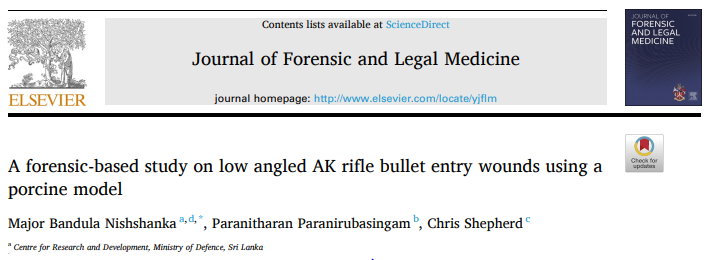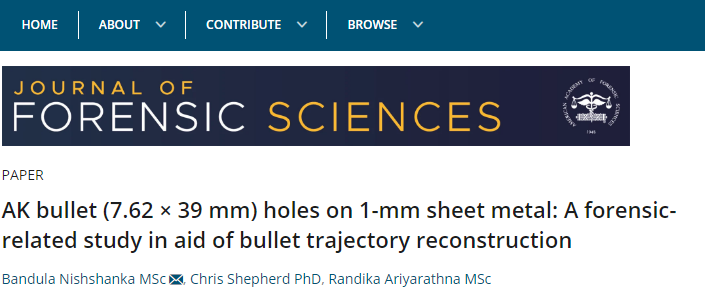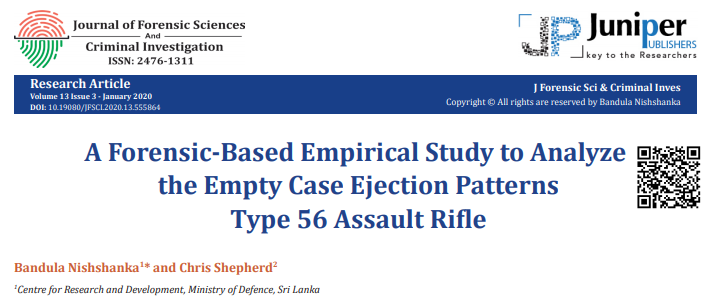CDRD Ballistic Research Outcomes published in top ranking Scientific Journals in the World
July 28, 2021The Armament and the Ballistics Wing of the Centre for Defence Research and Development of the State Ministry of National Security and Disaster Management recently published a series of scientific research articles containing new scientific knowledge in the area of forensic ballistics; the firearms and ammunition related investigative science. These novel findings have been published in top forensic science journals in the world such as Journal of Forensic Sciences, Forensic Science International, Forensic Science International- Digital Investigations, Science and Justice etc. published by the leading scientific journal publishers in the world such as Elsevier and Wiley. The publications present novel findings with regard to the diverse ricochet behaviour of AK bullets and emphasized the greater utilization of the findings as forensic evidence in shooting incident reconstruction. The publications while bringing out a lot of honour and reputation to the CDRD as the premier Defence Research and Development branch of the country, also uplifted the country`s image to the international with an outstanding number of publications, within a short span of time.
AK variant assault rifles are currently reported in crime scene shootings, locally and internationally with an increasing trend. However, there had been a considerable knowledge gap with regard to the ricochet behaviour of AK bullets (7,62 x 39 mm). The new publications consist of a series of empirical test results analyzed during the field test firing and these findings could be used as viable forensic evidence for scene reconstruction of AK gun related investigations. Forensic scientists and shooting investigators in the world frequently use empirical test results of the ricochet behaviour of different bullet types and ammunition for shooting incident reconstructions and during court presentations. However, there had been a serious lack of data with regard to AK bullets, especially due to the high risks involving conducting ricochet experiments with high velocity bullets. The newly published works highlight many significant phenomena that had not been previously reported in any scientific study.
The CDRD team was led by the Head of Armament and Ballistics Wing Lt Col Bandula Nishshanka RSP USP psc SLAC. Lt Col Nishshanka is an eminent scholar in the field of ballistics, forensic ballistics and armaments and a senior officer of the Sri Lanka Army. Making the research outcome into the greater practical utilization, the CDRD team has also introduced the first ever android based field investigation tool to estimate the exact direction of impact of AK bullet on light vehicles, using the bullet holes. The novel method has been validated and published in the “Forensic Science International – Digital Investigations” magazine by famed Elsevier publishers and the new tool was introduced and demonstrated for the Sri Lanka Police for the use, recently at the Panaluwa Firing Range. The research team also consists of Major WC Ariyarathna of the Sri Lanka Army, Mr Lalindu Weerakkody, Mr. Jayanga Palihena and Dr. Chris Shepherd of the University of Kent, UK who provided consultancy for the studies.





